By Mills Kelly
A Century of Appalachian Trail Hiker Food
August 7, 2025
When you hike the Appalachian Trail, what do you bring to eat?
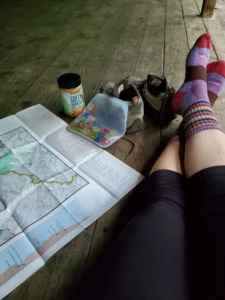
If you’re just out for a few hours or maybe for the day, you probably packed some energy bars, maybe some fresh or dried fruit and something snacky like trail mix or a candy bar. If you’re backpacking, you might have packed some freeze-dried meals, oatmeal, jerky, and lots of energy bars, trail mix, or other high-carb, high-protein snacks.
But if you were hitting the Trail in the 1930s, 1940s, or 1950s, you almost certainly brought along some onion sandwiches – two buttered slices of bread and a nice, juicy slice of fresh onion.
For my forthcoming book, A Hiker’s History of the Appalachian Trail (available for pre-order), I researched what foods hikers brought with them in their packs over the decades and some of what I found was quite a surprise.
Photo by Ilana Copel shows a hiker’s legs outstretched beside their boots, map, and trail snacks.
Ever since I started seeing onion sandwiches on hiker “grub lists” from the 1920s to the 1960s, I wondered if anyone I know had ever eaten one, much less taken such a sandwich with them on the Trail. I asked around and the closest I got was one friend who told me that her grandmother used to eat them for lunch on Saturdays. As far as hikers are concerned, onion sandwiches have gone the way of the canvas tent.
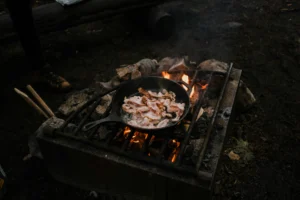 But what about bacon? If you’ve ever camped at an Appalachian Trail shelter, there is a reasonable chance that you woke up to the smell of bacon sizzling in a pan either at the shelter or in someone’s tent site. I think it’s fair to say that long distance hikers get their bacon fixes in restaurants near the Trail, but until at least the 1960s, they were advised to bring large slabs of bacon with them on their treks.
But what about bacon? If you’ve ever camped at an Appalachian Trail shelter, there is a reasonable chance that you woke up to the smell of bacon sizzling in a pan either at the shelter or in someone’s tent site. I think it’s fair to say that long distance hikers get their bacon fixes in restaurants near the Trail, but until at least the 1960s, they were advised to bring large slabs of bacon with them on their treks.
Photo by Blake Carpenter shows bacon frying in a cast iron pan over a fire.
How did they keep that bacon from greasing up their packs, especially in warm weather? Simple! Abercrombie & Fitch, which used to be America’s most important supplier of outdoor gear, sold something called a “pork bag” that hikers used to keep all that grease at bay.
And then there was “Dynamite Soup.” Over and over, I kept seeing references to this soup in the hiker advice literature. But despite my best efforts, I couldn’t find any trace of it in product catalogs or old advertisements. Like a small pebble in my hiking shoe, the mystery of Dynamite Soup annoyed me.
As things often go in the archives, I found the answer when I wasn’t looking for it. A couple of years ago, I was reading the correspondence of one of the founders of the Appalachian Trail and, in a letter to a friend, he laid it all out for me:
“One of our mainstays is [a] soup or stew that is not always above suspicion. With a basis of a handful of rice we add any dehydro vegetables in sight, especially onions, and a stick of Erbswurst, also know from its appearance and its (later) explosive qualities, as dynamite soup—with a little slab of chopped bacon and anything else that is lying around camp.”
So there it was, “dynamite” because it was gas-inducing. I’m not sure how I didn’t think of that in the first place.
What hikers ate “back in the day” is just one of the many ways the hiker experience on the Appalachian Trail has changed over the past 100 years. Gear, the environment, the Trail’s route – all are very different today. The A.T. is always changing, as are the hikers who put one foot in front of another heading north or south. Here’s hoping that onion sandwiches never make a comeback.
Discover More
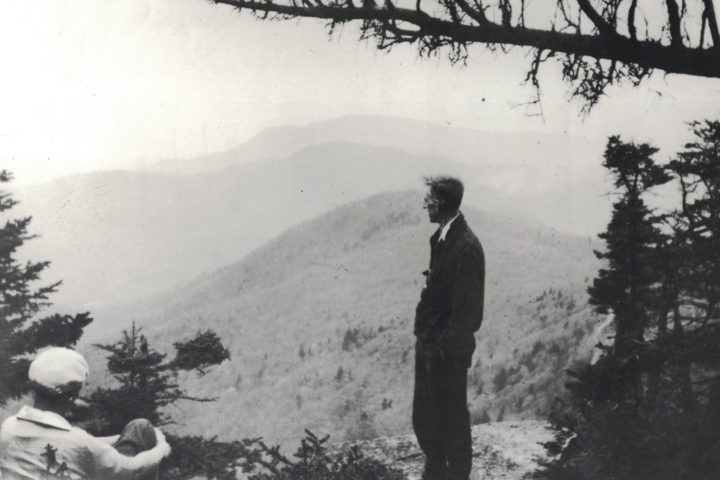
A History of Trail Building
ATC History
Just like the Appalachian Trail, our history is long. But throughout the years, the heart of our organization has remained the same: to protect and manage over 2,190 miles of the A.T. footpath and its surrounding landscapes.
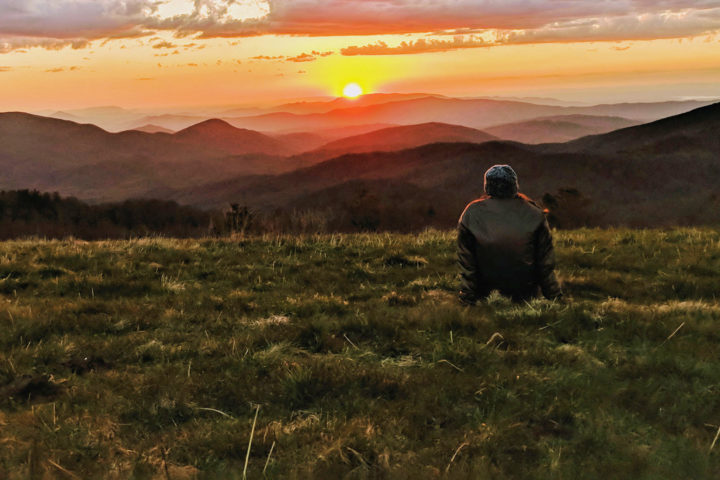
Plan and Prepare
Hiker Resource Library
A collection of resources for hikers to stay safe, healthy, and responsible on the Appalachian Trail.
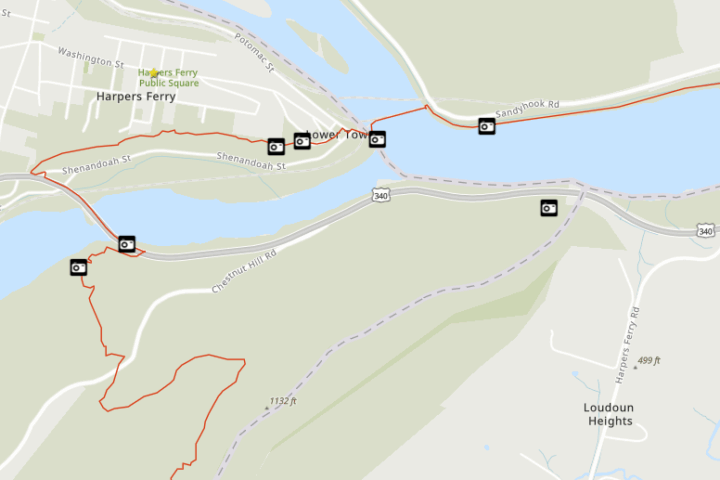
Discover the Trail
Interactive Map
Explore hundreds of locations along the trail including vistas, trailhead parking, overnight shelters, A.T. Communities, and Trail Clubs!
